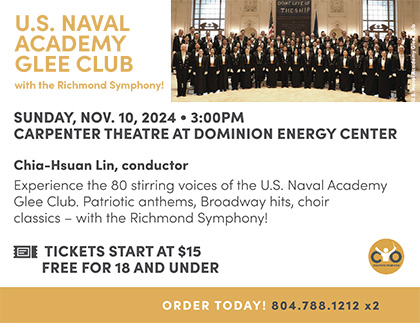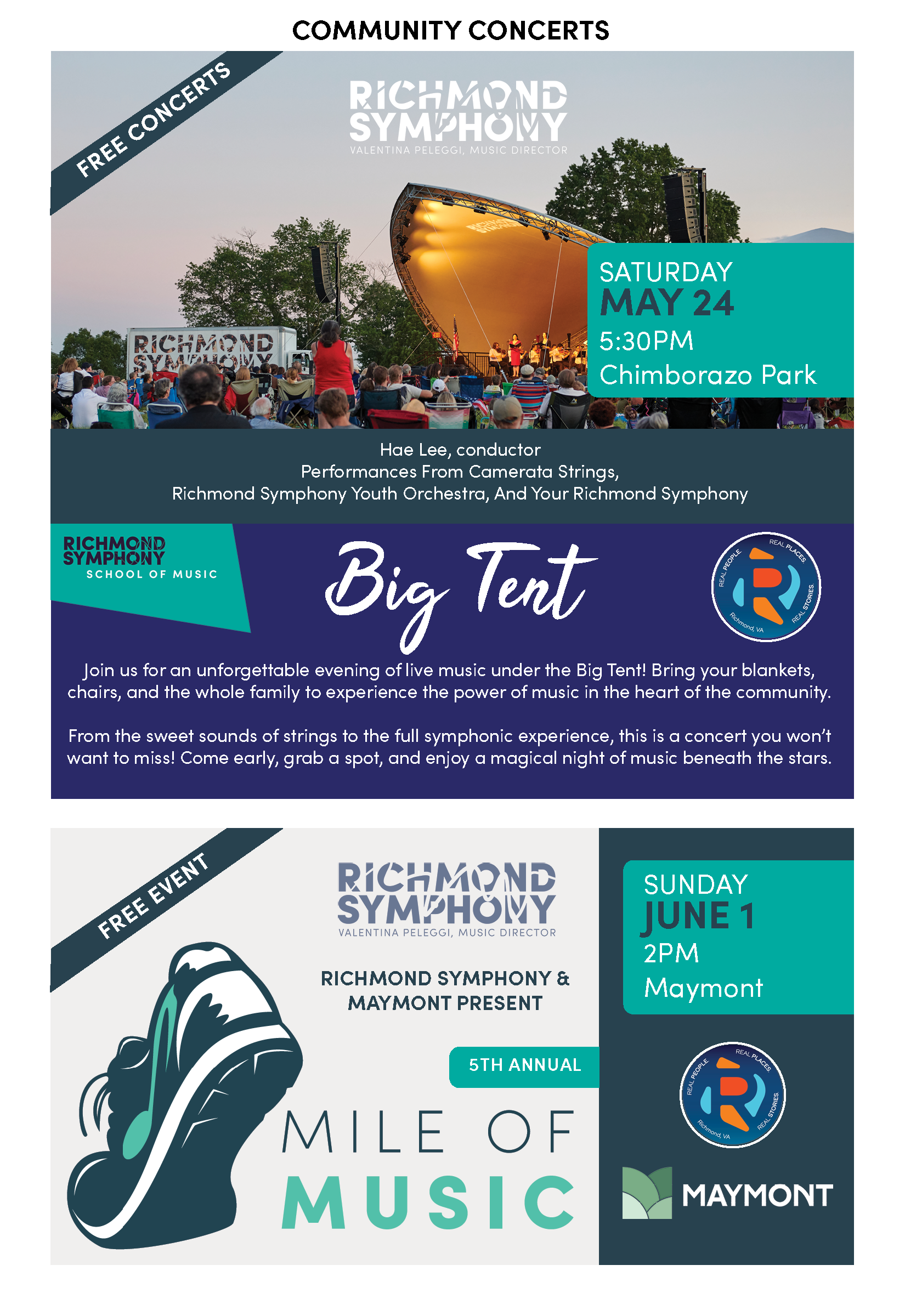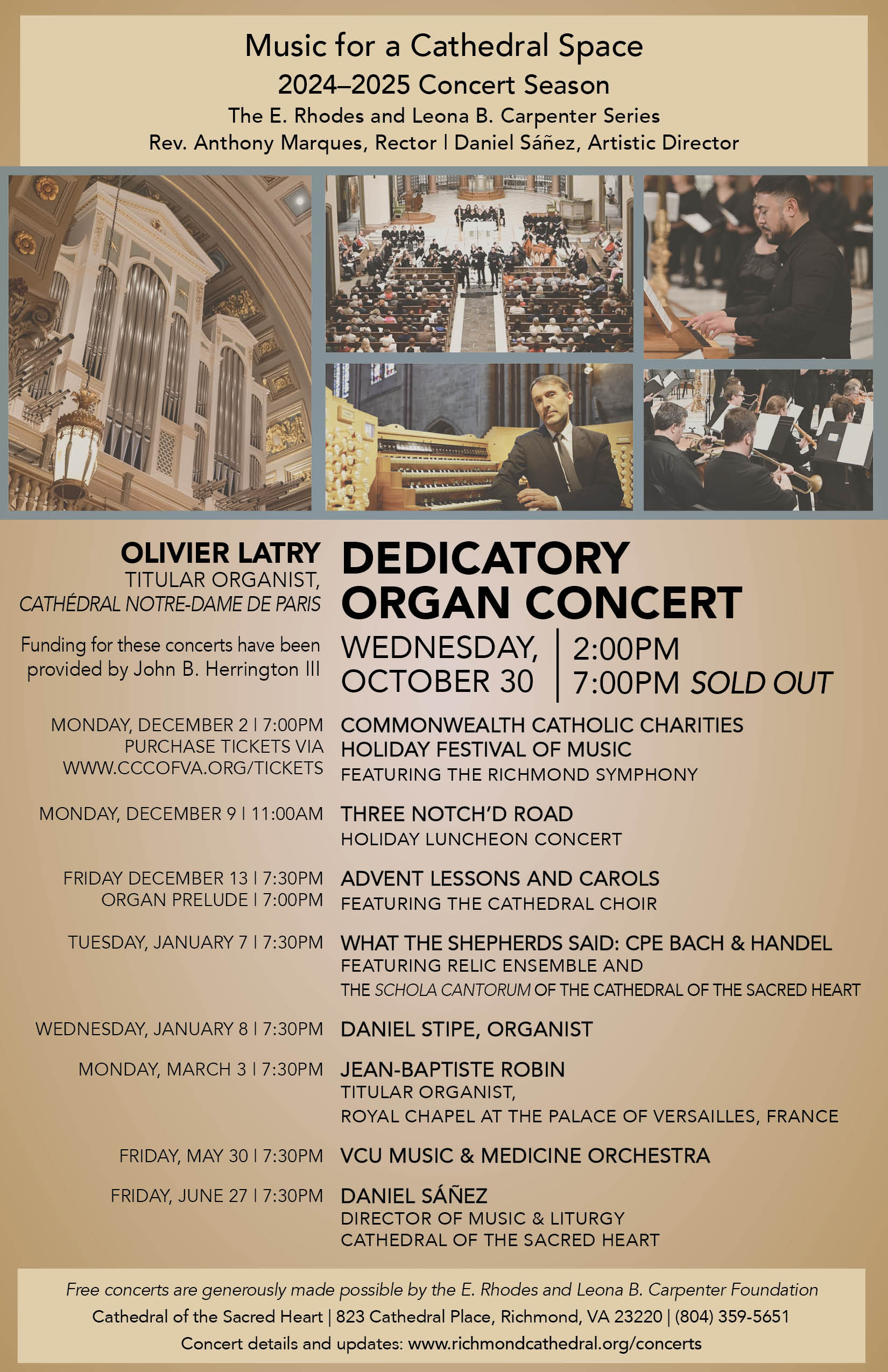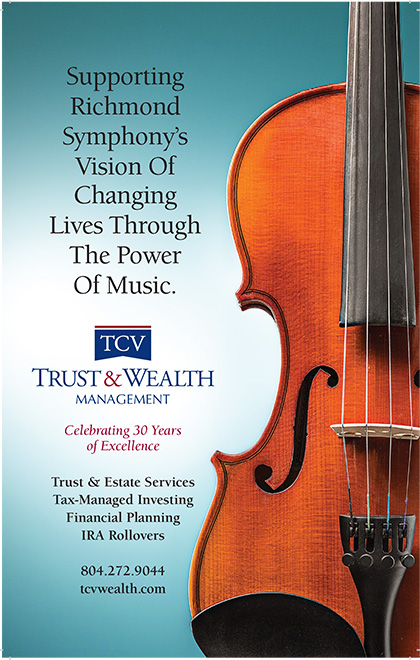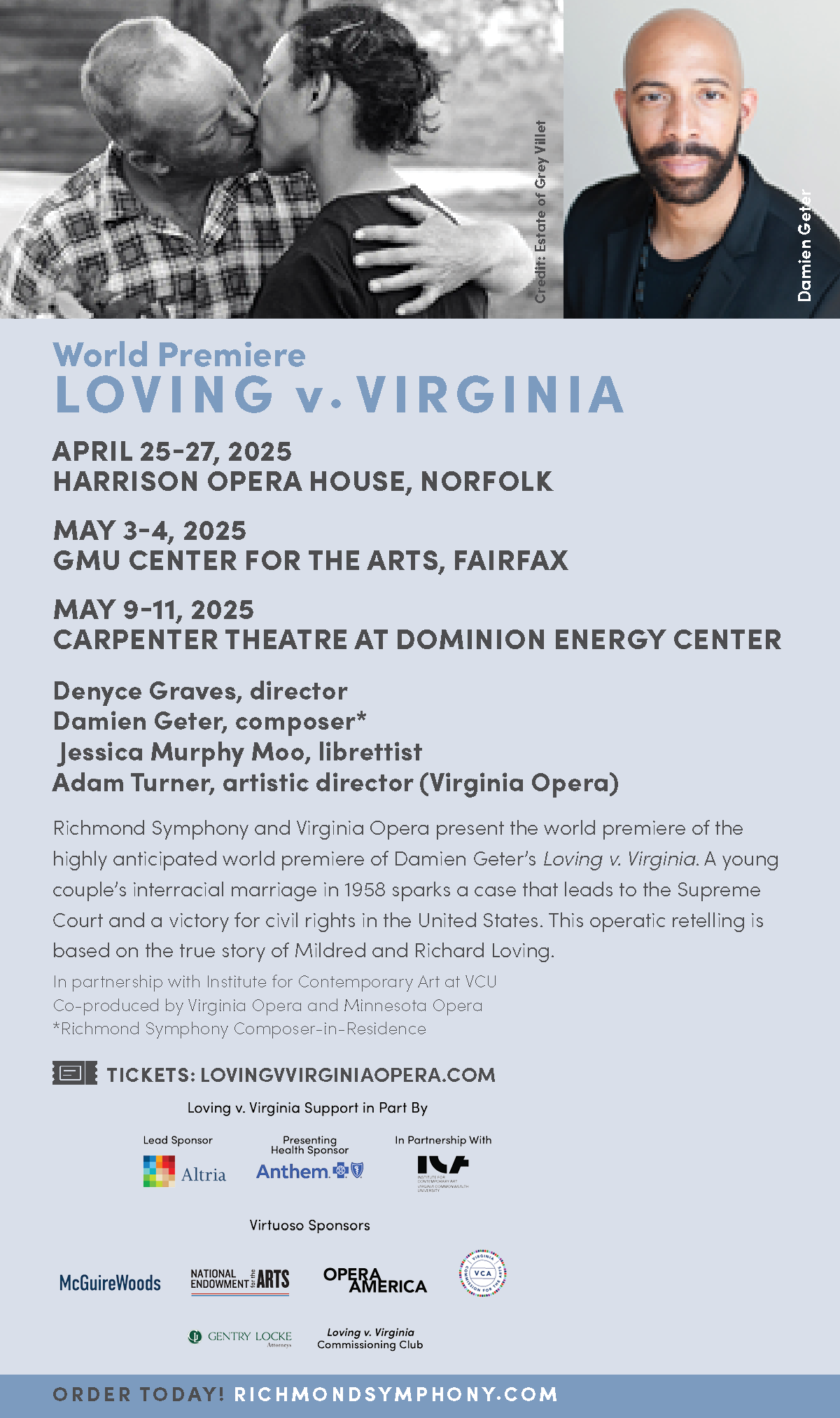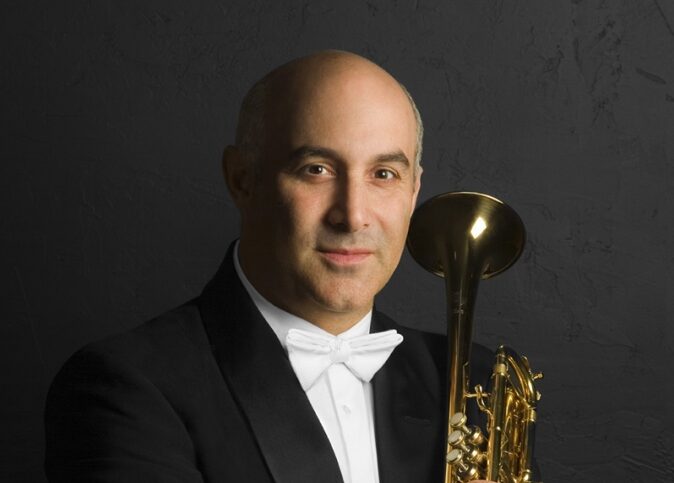
BRASS GLORY
Rei Hotoda | Conductor
Michael Sachs | TRUMPET

Vivian Fung (1975 – ) | Earworms | |
| Wynton Marsalis (1961 – ) | Trumpet Concerto | |
INTERMISSION | ||
Robert Schumann (1810 – 1856) | “Symphony No. 2 in C Major, Op. 61 | |
Vivian Fung: Earworms
A key feature of Music Director Valentina Peleggi’s programming is her ability to juxtapose pieces that approach a central theme from contrasting angles, often from diverse composers. In Brass Glory, Peleggi curates a selection of works that bring brass instruments into the spotlight, showcasing how different composers harness the brilliance of brass in distinct ways. One such work is Earworms by Canadian composer Vivian Fung, known for her innovative blending of Western classical forms with inspirations from various Asian musical traditions.
The Richmond Symphony first introduced Fung’s music to its audience two seasons ago with her Concerto for Two Violins and Orchestra. Born in 1975 in Edmonton, Canada, Fung has gained a reputation for merging large-scale Western classical structures with the intricacies of Asian folk traditions, all marked by her unique and imaginative style. Fung’s interests range from ethnomusicological research into Chinese folk music to reflections on the precariousness of our contemporary environments.
In 2013, Fung’s Violin Concerto won a prestigious JUNO Award for Classical Composition of the Year. Recently, her piece The Ice Is Talking appeared on percussionist Steven Schick’s album Weather Systems II: Soundlines, which was named one of the Best Classical Music Albums of 2023 by The New York Times. Critics have noted the balance of technical precision and immediate appeal in Fung’s music, with Natasha Gauthier praising its “hip humor” and “unapologetic, in-your-face virtuosity.”
Earworms was commissioned by Canada’s National Arts Centre Orchestra and premiered in March 2018, conducted by Alexander Shelley. The piece was inspired by Fung’s experience of becoming a mother and how her life had become more “complicated and chaotic,” yet richer and more meaningful. Fung explained that at the end of each day, she would often find herself humming tunes that stuck in her head—these catchy fragments became the foundation
for Earworms.
Approximately 12 minutes long, Earworms is a lively, whimsical orchestral piece that reflects the constant distractions and multitasking of modern life. Fung describes it as a commentary on “our diverted attention spans” and the constant barrage of media that surrounds us. The piece features snippets of well-known tunes—some charming, some perhaps irritating—woven into a playful, quirky arrangement. The brass play a prominent role, sometimes leading the melody, sometimes creating splashes of sound. As Peleggi notes, it feels like walking through a city, hearing different themes overlap and collide with the sounds of everyday life.
Fung worked these fragments into the piece the way she would hear them at night—looping, incomplete, and sometimes simultaneous. As the piece builds, the orchestra creates a chaotic mashup, with conflicting rhythms and musical gestures. The composition ends loudly and emphatically, as the earworms firmly take hold.
Wynton Marsalis: Trumpet Concerto
Guest conductor Anna Duczmal-Mróz has worked with the legendary Wynton Marsalis, who is celebrated as both a jazz icon and a classical musician. Like Marsalis, Duczmal-Mróz comes from a musical family—her mother, Agnieszka Duczmal, is a pioneering conductor in Poland. Marsalis, named after jazz pianist Wynton Kelly, is part of a renowned musical family, with three of his brothers also active in jazz.
Marsalis composed his Trumpet Concerto at the request of his friend Michael Sachs, principal trumpet of the Cleveland Orchestra. Sachs had long been an inspiration to Marsalis, and the concerto was a tribute to their friendship and to Sachs’s contributions to American orchestral trumpet playing. Completed in 2023, the Trumpet Concerto premiered in 2024 with Sachs and the Cleveland Orchestra under conductor Franz Welser-Möst.
Unusually structured in six movements, Marsalis’s Trumpet Concerto explores the rich history of the trumpet and its evolving role in music. The first movement, “March,” begins with a bold, trumpeting sound that Marsalis compares to “the blaring trumpeting of an elephant.” The march introduces themes that will be developed throughout the piece, including lyrical phrases and trumpet techniques such as growls and alternate fingerings.
The second movement, “Ballad,” features a duet between the trumpet and oboe, evoking the romanticism of doo-wop and paying homage to Louis Armstrong, one of Marsalis’s greatest influences. The third movement, “Mexican Son,” highlights the trumpet’s sharp, Spanish-inflected attack and its ceremonial role, especially in playing “Taps” at military funerals.
The fourth movement, “Blues,” illustrates Marsalis’s ability to blend jazz with classical traditions, linking the blues’ call-and-response form with the concerto’s dialogue between soloist and orchestra. The fifth movement, “French Pastoral (Flowing Waltz),” is a tribute to the legacy of French trumpet playing, which influenced both Marsalis and Sachs during their studies. Marsalis nods to French trumpet masters like Maurice André and Pierre Thibaud and their impact on the development of the instrument.
The final movement, “Harlequin Two-Step,” emphasizes the trumpet’s playful, trickster-like qualities. Marsalis incorporates themes from previous movements into a dance-like groove, culminating in a chaotic and exuberant conclusion, complete with references to the elephants from the opening movement.
Robert Schumann: Symphony No. 2 in C Major
Robert Schumann composed his Symphony No. 2 during a period of mental and physical decline, yet the work stands as a testament to his ability to overcome chaos and personal challenges. Schumann’s mental health deteriorated throughout his life, and he would later attempt suicide by throwing himself into the Rhine River. Though he survived, he spent the last years of his life in a psychiatric institution, passing away at the age of 46.
Schumann’s Second Symphony reflects a personal journey through struggle toward triumph. He drew inspiration from Beethoven’s “heroic” symphonies, particularly the victorious resolution of the Fifth Symphony. Schubert’s Great C Major Symphony also had a profound influence on Schumann. He had helped rediscover the forgotten score, arranging its posthumous premiere by Mendelssohn in 1839. Schumann praised the work for its “heavenly length,” and it served as a model for his
own symphony.
Bach was another key influence on Schumann’s Second Symphony, particularly after Schumann’s emotional breakdown in 1844. He had turned to a close study of Bach’s counterpoint to regain his composure, and the rigorous structure of Bach’s music helped
him recover.
The Second Symphony opens with a majestic brass fanfare, emerging from a mist of strings. The first movement is driven by a rhythmic idea that gives the music a sense of urgency and development. The Scherzo that follows features two trios, one of which encodes a motif spelling out Bach’s name in German musical notation. The third movement, an Adagio, blends Baroque pathos with Romantic sentiment, incorporating a fugue-like passage that recalls Bach’s counterpoint.
The finale brings the symphony full circle, returning to the energy of the first movement while introducing new themes. One haunting melody, played by the oboe, references Beethoven’s To the Distant Beloved, a hidden love message to Schumann’s wife, Clara. The symphony concludes with a triumphant restatement of the opening fanfare, signaling the composer’s victory over turmoil and the restoration
of confidence.
(c)2024 Thomas May
